4.7: FUNCIONES CONVEXAS Y SUBDIFERENCIALES NO
( \newcommand{\kernel}{\mathrm{null}\,}\)
En esta sección, presentamos un nuevo concepto que es útil en el estudio de problemas de optimización en los que la función objetiva puede no ser diferenciable.
Dejarf:R→R ser una función convexa. Un númerou∈R se llama subderivada de la funciónf atˉx siu⋅(x−ˉx)≤f(x)−f(ˉx) for all x∈R. El conjunto de todas las subderivadas def atˉx se llama el subdiferencial def atˉx y se denota por∂f(ˉx).
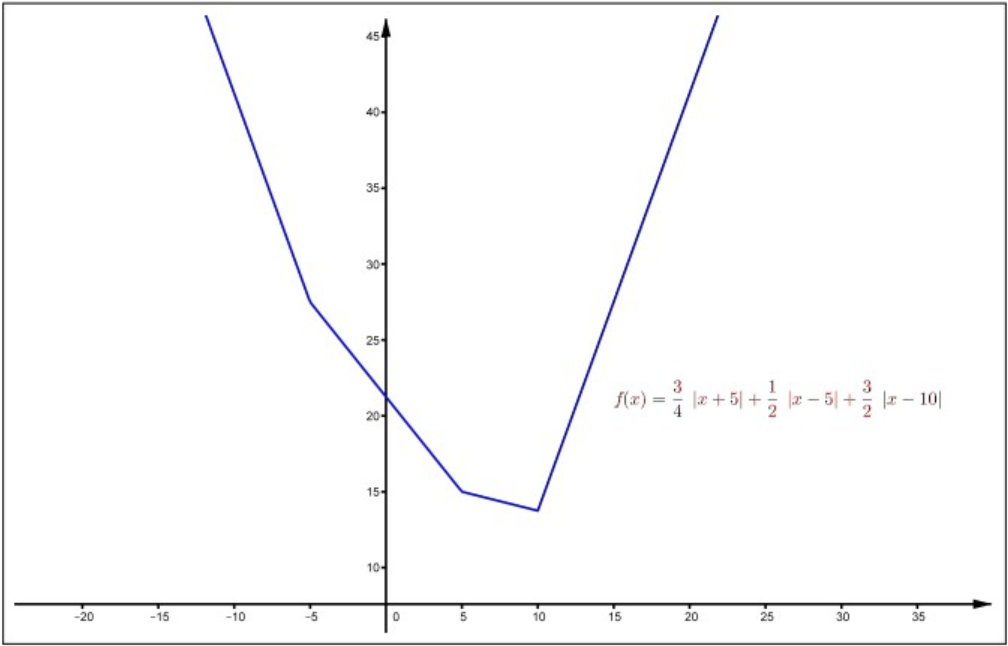
Figura4.7: Una función convexa no diferencial.
Vamosf(x)=|x|. Entonces∂f(0)=[−1,1].
Solución
Efectivamente, para cualquierau∈∂f(0), tenemosu⋅x=u(x−0)≤f(x)−f(0)=|x| for all x∈R. en particular,u⋅1≤|1|=1 yu⋅(−1)=−u≤|−1|=1. Así,u∈[−1,1]. De ello se deduce que∂f(0)⊂[−1,1]. Para cualquierau∈[−1,1], tenemos|u|≤1. Entoncesu⋅x≤|u⋅x|=|u||x|≤|x| for all x∈R. esto implicau∈∂f(0). Por lo tanto,∂f(0)=[−1,1].
Dejarf:R→R ser una función convexa, Fixa∈R. Defina la función de pendienteϕa porϕa(x)=f(x)−f(a)x−a forx∈(−∞,a)∪(a,∞). Entonces, parax1,x2∈(−∞,a)∪(a,∞) conx1<x2, tenemosϕa(x1)≤ϕa(x2).
- Prueba
-
Este lema sigue directamente de Lemma 4.6.5. ◻
Dejarf:R→R ser una función convexa y dejarˉx∈R. Luegof tiene derivada izquierda y derivada derecha enˉx. Además,supx<ˉxϕˉx(x)=f′−(ˉx)≤f′+(ˉx)=infx>ˉxϕˉx(x), dondeϕˉx se define en (4.17).
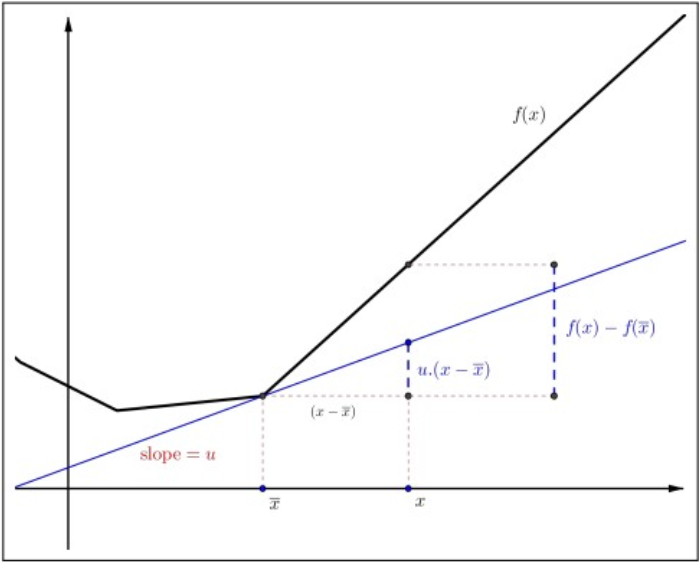
Figura4.8: Definición de subderivada.
- Prueba
-
Por Lema 4.7.1, la función de pendienteϕx definida por (4.17) está aumentando en el intervalo(ˉx,∞) y delimitada por debajo porϕK(ˉx−1). Por el Teorema 3.2.4, el límitelimx→ˉx+ϕi(x)=limx→ˉx+f(x)−f(ˉx)x−ˉx existe y es finito. Por otra parte,limx→¯x+ϕx(x)=infx>xϕx(x). Así,f′+(ˉx) existe yf′+(ˉx)=infx>xϕi(x). De igual manera,f′−(ˉx) existe yf′−(ˉx)=supx<Rϕx(x). Aplicando Lema 4.7.1 de nuevo, vemos queϕx(x)≤ϕx(y) whenever x<ˉx<y. Esto implicaf′−(ˉx)≤f′+(ˉx). La prueba está completa. ◻
Dejarf:R→R ser una función convexa y dejarˉx∈R. Entonces∂f(ˉx)=[f′−(ˉx),f′+(ˉx)].
- Prueba
-
Supongamosu∈∂f(ˉx). Por la definición (4.16), tenemosu⋅(x−ˉx)≤f(x)−f(ˉx) for all x>ˉx. Esto implicau≤f(x)−f(ˉx)x−ˉx for all x>ˉx. Así,u≤limx→ˉx+f(x)−f(ˉx)x−ˉx=f′+(ˉx). Similarmente, tenemosu⋅(x−ˉx)≤f(x)−f(ˉx) for all x<ˉx. Así,u≥f(x)−f(ˉx)x−ˉx for all x<ˉx. Esto implicau≥f′−(ˉx). Entonces∂f(ˉx)⊂[f′−(ˉx),f′+(ˉx)]. Para probar la inclusión opuesta,u∈[f′−(ˉx),f′+(ˉx)] tomar. por Teorema 4.7.2supx<xϕˉx(x)=f′−(ˉx)≤u≤f′+(ˉx)=infx>ˉxϕˉx(x). Usando la estimación superior porf′+(ˉx) foru,u≤ϕˉx(x)=f(x)−f(ˉx)x−ˉx for all x>ˉx. se tiene De ello se deduce queu⋅(x−ˉx)≤f(x)−f(ˉx) for all x≥ˉx. De igual manera, uno también tieneu⋅(x−ˉx)≤f(x)−f(ˉx) for all x<ˉx. Así, (4.16) sostiene y, por lo tanto,u∈∂f(ˉx). Por lo tanto, (4.18) sostiene. ◻
Dejarf:R→R ser una función convexa yˉx∈R. Entoncesf es diferenciable enˉx si y solo si∂f(ˉx) es un singleton. En este caso,∂f(ˉx)={f′(ˉx)}.
- Prueba
-
Supongamos quef es diferenciable enˉx. Entoncesf′−(ˉx)=f′+(ˉx)=f′(ˉx). Por Teorema 4.7.3,∂f(ˉx)=[f′−(ˉx),f′+(ˉx)]={f′(ˉx)}. Así,∂f(ˉx) es un singleton.
Por el contrario, si∂f(ˉx) es un singleton, debemos tenerf′−(ˉx)=f′+(ˉx). Por lo tanto,f es diferentaible enˉx. ◻
Vamosf(x)=a|x−b|+c, dóndea>0.
Solución
Entoncesf es una función convexa yf′−(b)=−a,f′+(b)=a. Así,∂f(b)=[−a,a]. ya quef es diferenciable on(−∞,b) y(b,∞), tenemos\ [\ parcial f (x) =\ left\ {\ begin {array} {ll}
\ {-a\}, &\ text {if} x<b\ text {;}\\
{[-a, a],} &\ text {if} x=b\ text {;}\\
\ {a\}, &\ texto {si} x>b\ texto {.}
\ end {array}\ derecho.\]
DejarA yB ser dos subconjuntos no vacíos deR yα∈R. DefinirA+B={a+b:a∈A,b∈B} and αA={αa:a∈A}.

Figura4.9: Conjunto de adición.
Dejarf,g:R→R ser funciones convexas y dejarα>0. Entoncesf+g yαf son funciones convexas y\ [\ begin {array} {l}
\ parcial (f+g) (\ bar {x}) =\ parcial f (\ bar {x}) +\ parcial g (\ bar {x})\
\ parcial (\ alpha f) (\ bar {x}) =\ alfa\ parcial f (\ bar {x})\ texto {.}
\ end {array}\]
- Prueba
-
No es difícil ver quef+g es una función convexa y\ [\ begin {array} {l}
(f+g) _ {+} ^ {\ prime} (\ bar {x}) =f_ {+} ^ {\ prime} (\ bar {x}) +g_ {+} ^ {\ prime} (\ bar {x})\\
(f+g) _ {-} ^ {prime\} (\ bar {x}) =f_ {-} ^ {\ prime} (\ bar {x}) +g_ {-} ^ {\ prime} (\ bar {x})\ texto {.}
\ end {array}\] Por teorema 4.7.3,\ [\ begin {alineado}
\ parcial (f+g) (\ bar {x}) &=\ left [(f+g) _ {-} ^ {\ prime} (\ bar {x}), (f+g) _ {+} ^ {\ prime} (\ bar {x})\ derecha]\\
&= izquierda [f_ {-} ^ {\ prime} (\ bar {x}) +g_ {-} ^ {\ prime} (\ bar {x}), f_ {+} ^ {\ prime} (\ bar {x}) +g_ {+} ^ {\ prime} (\ bar { x})\ derecha]\\
&=\ izquierda [f_ {-} ^ {\ prime} (\ bar {x}), f_ {+} ^ {\ prime} (\ bar {x})\ derecha] +\ izquierda [g_ {-} ^ {\ prime} (\ bar {x}), g_ {+} ^ {\ prime} (\ bar {x})\ derecha]\\
&=\ parcial f (\ bar {x}) +\ parcial g (\ barra {x})\ texto {.}
\ end {aligned}\] La prueba para la segunda fórmula es similar. ◻
Dejara1<a2<⋯<an y dejarμi>0 parai=1,…,n. Definirf(x)=n∑i=1μi|x−ai|.
Solución
Entoncesf es una función convexa. Por Teorema 4.7.5, obtenemos\ [\ parcial f (\ bar {x}) =\ izquierda\ {\ comenzar {array} {ll}
\ sum_ {a_ {i} <\ bar {x}}\ mu_ {i} -\ sum_ {a_ {i} >\ bar {x}}\ mu_ {i}, &\ texto {si}\ bar {x}\ notin\ izquierda\ {a_ {1},\ ldots, a_ {n}\ derecha\}\
\ suma_ {a_ {i} <\ bar {x}}\ mu_ {i} -\ sum_ {a_ {i} >\ bar {x}}\ mu_ {i} +\ izquierda [-\ mu_ {i_ {0} },\ mu_ {i_ {0}}\ derecho], &\ texto {si}\ bar {x} =a_ {i_ {0}}\ texto {.}
\ end {array}\ derecho.\]
Dejarfi:R→R,i=1,…,n, ser funciones convexas. Definirf(x)=max{fi(x):i=1,…,n} and I(u)={i=1,…,n:fi(u)=f(u)}. Entoncesf es una función convexa. Además,∂f(ˉx)=[m,M], dondem=mini∈I(ˉx)f′i−(ˉx) and M=maxi∈I(ˉx)f′i+(ˉx).
- Prueba
-
Fijaru,v∈R yλ∈(0,1). Para cualquierai=1,…,n, tenemosfi(λu+(1−λ)v)≤λfi(u)+(1−λ)fi(v)≤λf(u)+(1−λ)f(v). Esto implicaf(λu+(1−λ)v)=max1≤i≤nfi(λu+(1−λ)v)≤λf(u)+(1−λ)f(v). Así,f es una función convexa. De igual manera verificamos quef′+(ˉx)=M yf′−(ˉx)=m. Por Teorema 4.7.3,∂f(ˉx)=[m,M]. La prueba ya está completa. ◻
el producto de dos funciones convexas no es una función convexa en general. Por ejemplo,f(x)=x yg(x)=x2 son funciones convexas, pero noh(x)=x3 es una función convexa.
El siguiente resultado puede considerarse como una versión de la primera prueba derivada para extremos en el caso de funciones no diferenciables.
Dejarf:R→R ser una función convexa. Entoncesf tiene un mínimo absoluto enˉx si y solo si0∈∂f(ˉx)=[f′−(ˉx),f′+(ˉx)].
- Prueba
-
Supongamos quef tiene un mínimo absoluto enˉx. Entoncesf(ˉx)≤f(x) for all x∈R. Esto implica0⋅(x−ˉx)=0≤f(x)−f(ˉx) for all x∈R. Se deduce de (4.16) que0∈∂f(ˉx).
Por el contrario0∈∂f(ˉx), si, de nuevo, por (4.16),0⋅(x−ˉx)=0≤f(x)−f(ˉx) for all x∈R. Así,f tiene un mínimo absoluto enˉx. ◻
Dejark ser un entero positivo ya1<a2<⋯<a2k−1. Definirf(x)=2k−1∑i=1|x−ai|, parax∈R.
Solución
De la fórmula subdiferencial del Ejemplo 4.7.3 se deduce que0∈∂f(ˉx) si y sólo siˉx=ak. Así,f tiene un mínimo absoluto único enak.
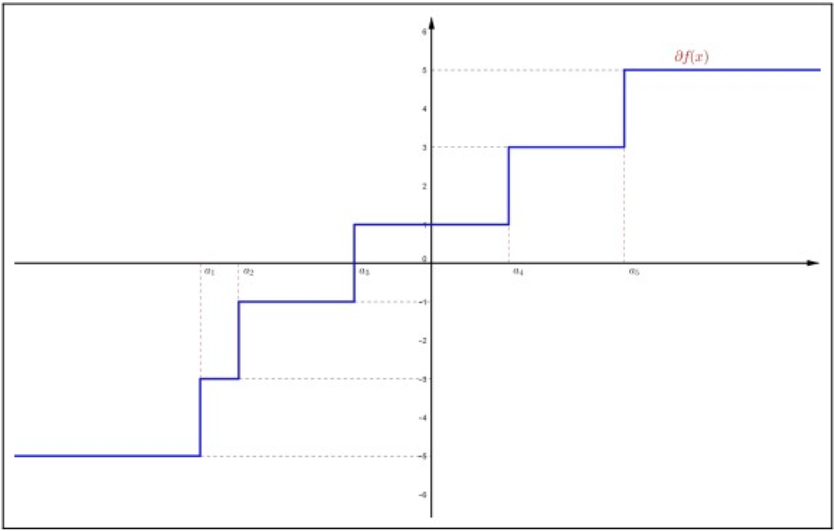
Figura4.10: Subdiferencial def(x)=∑2k−1i=1|x−ai|.
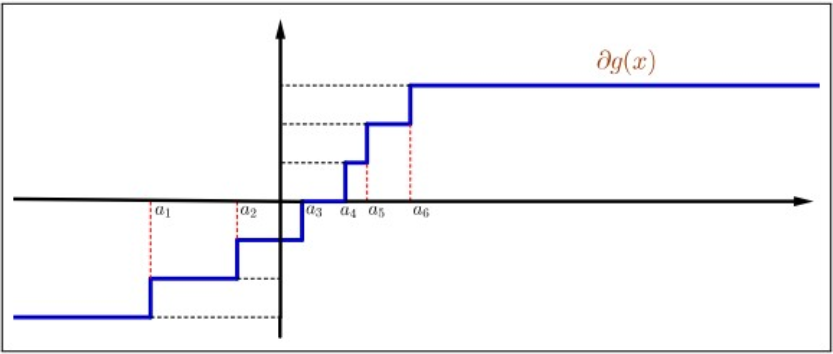
Figura4.11: Subdiferencial deg(x)=∑2ki=1|x−ai|.
Del mismo modo, sia1<a2<⋯<a2k yg(x)=2k∑i=1|x−ai|. Entonces0∈∂g(ˉx) si y solo siˉx∈[ak,ak+1]. Así,g tiene un mínimo absoluto en cualquier punto de[ak,ak+1].
El siguiente teorema es una versión del Teorema del Valor Medio (Teorema 4.2.3) para funciones no diferenciables.
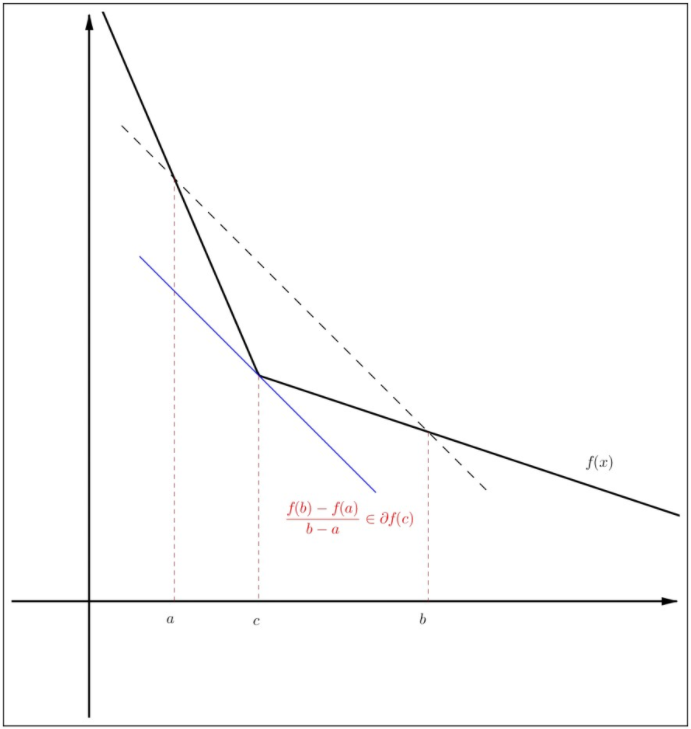
Figura4.12: Teorema del valor medio subdiferencial.
Dejarf:R→R ser una función convexa y dejara<b. Entonces existec∈(a,b) tal quef(b)−f(a)b−a∈∂f(c).
- Prueba
-
Definirg(x)=f(x)−[f(b)−f(a)b−a(x−a)+f(a)]. Entoncesg es una función convexa yg(a)=g(b). Así,g tiene un mínimo local en algunosc∈(a,b) y, por lo tanto,g también tiene un mínimo absoluto enc. Observe que la funciónh(x)=−[f(b)−f(a)b−a(x−a)+f(a)] es diferenciable enc y,∂h(c)={h′(c)}={−f(b)−f(a)b−a}. por lo tanto, Por Teorema 4.7.8 y la regla de suma subdiferencial,0∈∂g(c)=∂f(c)−{f(b)−f(a)b−a}. Esto implica (4.19). La prueba ya está completa. ◻
Dejarf:R→R ser una función convexa. Entonces Lipschitzf es continuo si y solo si existeℓ≥0 tal que∂f(x)⊂[−ℓ,ℓ] for all x∈R.
- Prueba
-
Supongamosf que Lipschitz es continuo enR. Entonces existeℓ≥0 tal que|f(u)−f(v)|≤ℓ|u−v| for all u,v∈R. Entonces para cualquierx∈R,f′+(x)=limh→0+f(x+h)−f(x)h≤limh→0+ℓ|h|h=ℓ. De igual manera,f′−(x)≥−ℓ. Así, a∂f(x)=[f′−(x),f′+(x)]⊂[−ℓ,ℓ]. la inversa, arreglar cualquierau,v∈R conu≠v. Aplicando el Teorema 4.7.9, obtenemosf(v)−f(u)v−u∈∂f(c)⊂[−ℓ,ℓ], para algunosc en el mediou yv. Esto implica|f(u)−f(v)|≤ℓ|u−v|. Esta desigualdad obviamente se sostiene parau=v. Por lo tanto,f es Lipschitz continuo. ◻
Ejercicio4.7.1
Encuentra subdiferenciales de las siguientes funciones:
- f(x)=a|x|,a>0.
- f(x)=|x−1|+|x+1|.
- Responder
-
Agrega textos aquí. No elimine primero este texto.
Ejercicio4.7.2
Encuentra el subdiferencial de la funciónf(x)=max{−2x+1,x,2x−1}.
- Responder
-
Agrega textos aquí. No elimine primero este texto.
Ejercicio4.7.3
Vamosf(x)=∑nk=1|x−k|. Encuentra todos los minimizadores absolutos de la función.
- Responder
-
Agrega textos aquí. No elimine primero este texto.
Ejercicio4.7.4
Dejarf:R→R ser una función convexa. Fijara,b∈R y definir la funcióng porg(x)=f(a x+b), \text { for } x \in \mathbb{R} Demostrar eso\partial g(\bar{x})=a \partial f(a \bar{x}+b).
- Responder
-
Agrega textos aquí. No elimine primero este texto.
Ejercicio\PageIndex{5}
Dejarf: \mathbb{R} \rightarrow \mathbb{R} ser una función convexa. Supongamos que\partial f(x) \subset[0, \infty) para todosx \in \mathbb{R}. Demostrar quef es monótona aumentando en\mathbb{R}.
- Responder
-
Agrega textos aquí. No elimine primero este texto.


